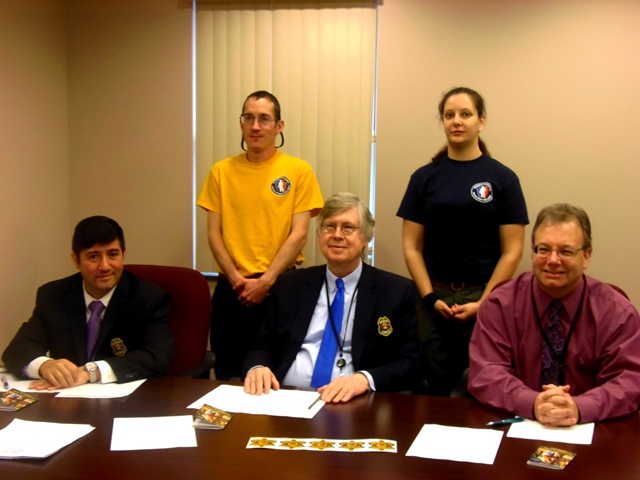
CLEARFIELD – Although Pennsylvania’s spring wildfire prevention week was March 19-25, Gov. Tom Wolf’s proclamation was reaffirmed Tuesday by the Clearfield County Commissioners, as measures should be taken by residents all year around.
Kim Kaschalk, secretary/treasurer of the Moshannon Forest Firefighters Association, presented information and tips for wildfire prevention. Kaschalk is a part of a support crew of specially trained firefighters who assist the Department of Conservation & Natural Resources and local fire companies with fighting wildfires.
According to her, wildfire season officially begins in March on the east coast, and it runs until early- to mid-June. The second wildfire season begins in October and lasts until the first significant snowfall.
In 2016, she said the Moshannon Forest District reported 68 wildfires that burned 185 acres. So far this year, she said there have been nine wildfires that have burned 35 acres.
Kaschalk said recent windstorms were to blame for most of the wildfires in early 2017. She said high winds were blowing down powerlines, sparking fires that were spreading.
Locally, she said residents are a little complacent with preventative measures, as there aren’t massive wildfires here like in the western and southern parts of the United States.
However, she pointed out that Pennsylvania had its worst fire in 25 years on April 20-25, 2016 in Barrett Township near the Poconos. It started out as four, smaller fires, which combined to form two larger fires and ultimately the 16 Mile Fire.
Kaschalk said when the fire was upgraded to a Type 2, the Smokey Bear Hotshots from New Mexico were deployed to Pennsylvania. She said like most in Pennsylvania, the 16 Mile Fire was driven by wind carrying embers.
Kaschalk offered the following wildfire prevention tips:
- Check the weather conditions in your area. Don’t burn when conditions are dry and windy.
- Check with your local municipality regarding burning regulations. Also, ask if yard debris pick-up programs are available to avoid burning.
- Check your burn site to make sure it’s clear of low-hanging powerlines and tree limbs. Allow at least three times the height of the pile of vertical clearance.
- Check around your burn site to make sure it’s surrounded by gravel or mineral soil at least 10 feet in all directions.
- Prepare your pile and keep it small and more manageable.
- Use a metal burn barrel and make sure it’s in good condition. Place a metal screen overtop your barrel to contain embers.
- Keep a shovel and hose near your burn site.
- Don’t leave your fire or burn barrel unattended.
- Make sure your fire is out. Douse it with water and stir it up.
More tips can be found on the Smokey Bear wildfire Web site or on the DCNR Web site by clicking on the forestry and wildfire tabs.
Kaschalk said anyone found to be responsible for causing a wildfire will be liable for the costs of bringing in specialized fire personnel and equipment. If the air tanker must be deployed, she said the bill will be $26 per minute from the time it takes off until it lands again.
On March 31 an air tanker demonstration will take place at the Mid-State Airport. The air tanker will be available for deployment beginning April 1 until the end of the spring wildfire season.